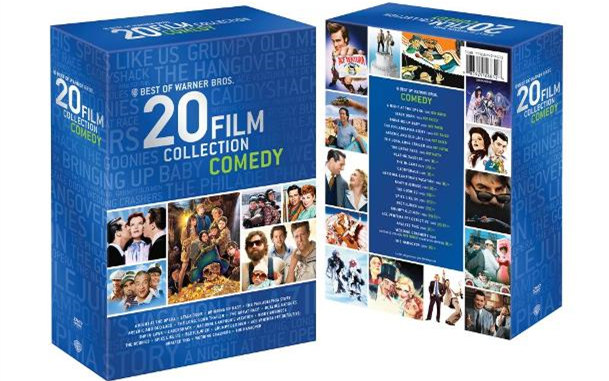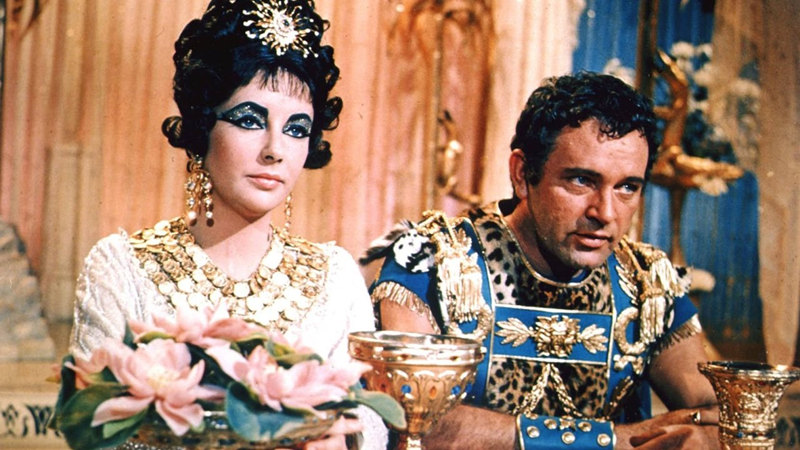The year America turned 200 was the last time prior to “The Artist” that a mostly silent film—Mel Brooks’ “Silent Movie”—was featured in a major theatrical release. But the bigger milestone is that “The Artist” was also the first mostly silent movie to win Best Picture since “Seventh Heaven” did it in 1927-28.
How is that even possible? I find it mind-boggling that, in a time when electronic gadgets and white noise seem to dominate our lives, this modest film by Michel Hazanavicius captivated audiences and charmed critics.
Then again, timing is everything, and this particular year the Academy of American Motion Pictures and Sciences was in retrospective mode, looking back and paying tribute to the long and fascinating history of Hollywood films. So in a way, it’s not surprising that “The Artist”—a love letter to the early history of movies—would rise to the top.
Credit too a suave and dapper Jean Dujardin, who plays the role of silent movie superstar George Valentin with such Douglas Fairbanks flair that you could swear he was a reincarnation. “Singin’ in the Rain” was an obvious influence, as “The Artist” tells the story of the advent of “talkies” and how it displaced silent movie performers. But from the opening scene, where a hammy Valentin basks in the audience’s adulation, hogging the spotlight for himself while his co-star stews, you’re also reminded of Tim Allen’s attention-grabbing character in “GalaxyQuest.”
But then, a chance meeting that’ not really chance at all—a Hollywood climber named Peppy Miller (Bérénice Bejo), who grabs headlines by inserting herself into Valentin’s post-premiere—sets the plot in motion. Then history intrudes. Kinograph studios goes totally talkie, like other studios, leaving silent movie stars suddenly unemployed. And in their search for new faces, they “discover” Peppy Miller, who, unlike Valentin, finds herself in the right place at the right time.
“The Artist” charts what happens when these two people, so obviously fond of each other, find themselves at opposite ends of a Hollywood rebirth and a national crisis—the stock market crash. Will they find each other, despite their rising and falling stars?
That’s the dramatic question, and along the way there’s an entertaining Jack Russell terrier played by three dogs (Uggie, Dash, and Dude) that steals every scene, and attention to detail that includes filming in former silent movie star Mary Pickford’s home.
At a turning point in the film, Peppy is giving an interview in a restaurant and tells the press what they want to hear, saying that no one wants to watch silent movie stars “mugging” for the camera in melodramatic, exaggerated histrionics. They want to just hear people talk, she says. Well, an interesting achievement of “The Artist” is that Dujardin not only apes the mugging that silent movie actors engaged in, but he also rises to the challenge of conveying all of this character’s complex emotions “off-screen” without being able to talk—using gestures, facial expressions, and body language to nail his character. This aspect of Dujardin’s role is much more restrained, and yet confined by subtlety he still manages to deliver. And of course it’s positively brilliant for the filmmakers to tell the story of a silent movie star in silent movie style.
There are moments in the film when sound is used as a special effect—in much the same way that color was used to brighten the threshold from Kansas to Oz in “The Wizard of Oz.” And after watching most of the film in silence, it really is startling. But interestingly enough, it’s tied to the main character’s psyche, and that makes it doubly striking.
Dujardin and Bejo make a memorable couple, and this black-and-white throwback benefits from their “peppy” energy and effervescent personalities. “The Artist” is a bouncy film that pulls out of its deliberate second-act reverse climax with all the bravado of a stunt pilot challenging G-force up until the very last second.
Video:
Hazanavicius used Kodak Vision3 500T 5219 35mm film and a 2K Digital Intermediate from the Super 35 source to create the “Academy ratio” that was used in the early days of Hollywood. It’s matted on the left and right sides and presented in 1.33:1 aspect ratio.
I’m not surprised to report that the video is stellar. Black and white is a forgiving format, and what I saw in the awards screener I was sent last year raised my expectations. Black levels are strong enough to provide deep contrast without oversoaking the frames, and there’s just enough hint of grain to remind you that you’re watching a film. A high level of detail is present in medium shots and long shots, as well as in close-ups. If there were any artifacts, I didn’t see them. Maybe I was too busy reading the title cards. At any rate, the AVC/MPEG-4 transfer appears to be a good one.
Audio:
The audio is mostly a musical soundtrack, the way that old silent movies depended upon a single piano or organ player that seemed slightly detached from the film. Hazanavicius obviously sought to recapture that feeling, rather than trying to blow away people in their home theaters. In fact, you’ll have to turn up the volume on this one, because it was mastered at a very low decibel level, as if to prod people in that direction. There are a few instances of audio other than music, but to say anything more would be to enter spoiler territory.
Extras:
The best bonus feature is a Q&A with actors Dujardin, Bejo, Missi Pyle and James Cromwell, director Hazanavicius, and producer Thomas Langmann. Matt Holzman moderates this 45-minute session, which is much more than a praisefest.
In addition, there’s a nice backgrounder provided in “The Artist: The Making of an American Romance,” which takes you back to the time period of the film and positions “The Artist” in the context of the period. It’s a typical cast-and-crew making-of extra featuring scenes from the film and other shots, but it offers a nice grounding for curious viewers. “Hollywood as a Character: The Locations of the Artist” does the same thing with specific locations, but in a five-minute solo piece that’s actually redundant if you’ve watched the making-of feature.
Rounding out the bonus features is a four-part feature that zeroes in on specific aspects of production (design, cinematography, costumes, music) and runs close to 12 minutes long, along with a two-minute blooper reel set to a silent movie musical score.
A UV Digital Copy is also included, along with way too many sneak peeks that you have to skip individually before you get the main menu.
Bottom line:
“The Artist” received Oscars for Best Picture, Best Director, Best Actor, Best Original Score, and Best Costume Design. And it’s not just a North American thing. Across the Atlantic “The Artist” won Best Film, Best Director, Best Actor, Best Original Music, Best Screenplay, Best Costume Design, and Best Cinematography at the BAFTA Awards. I’m not sure how much replay this film will get, but a first viewing is awfully satisfying—though it makes the audience work a little harder than they’re accustomed.


